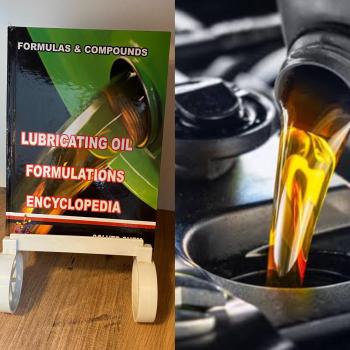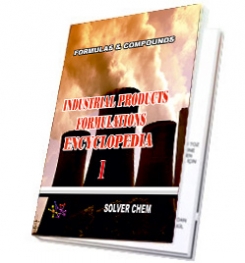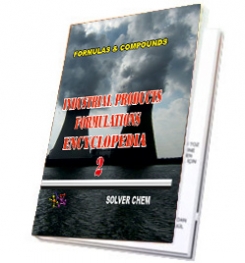
-
How is diesel fuel made?
Crude oil that is pumped out of the ground is composed of thousands of different hydrocarbon compounds - compounds composed of carbon and hydrocarbon. The carbon atoms link together in chains of different lengths, shapes and sizes. Each individual chain length or molecular size has different properties including progressively higher boiling points, so they can be separated by boiling point or distillation.Distillation is the first major process at an oil refinery. As the crude oil is heated, different hydrocarbon compounds are separated by their boiling temperatures. The lightest components such as ethane and propane come off the top of the distillation tower. The next components, called naphtha, are used for making gasoline.
The next heavier portion of crude oil coming from the distillation tower is used to make diesel fuel. Diesel fuel contains larger hydrocarbon molecules, with more carbon atoms than gasoline. Simple distillation does not produce enough gasoline and diesel fuel, so heavier fractions of crude oil are broken into smaller compounds by thermal or catalytic cracking, or hydrocracking, to produce higher volumes of gasoline and diesel fuel. To lower the level of sulphur in the fuel, some of these fractions may be hydrotreated - a refinery process that reacts a fraction of crude oil with hydrogen at high temperature and pressure, in the presence of a catalyst, to improve colour and odour, and reduce sulphur content. Various component streams are blended to meet the required diesel fuel specifications.
-
What is the difference between diesel fuel and gasoline?
Diesel fuel differs from gasoline in several ways. Diesel fuel is heavier and "oilier" than gasoline. It evaporates much more slowly because it is composed of larger hydrocarbon molecules, which have higher boiling points, typically 150 °C to 370 °C. -
How is diesel fuel classified?
Diesel fuel is usually classified as- Seasonal diesel fuel: Type B or Number 2 - the most commonly used diesel fuel.
- Light diesel fuels: Type A or Number 1, for special applications.
Recently, diesel fuel has also been classified by sulphur content: ultra low sulphur, low sulphur diesel and regular sulphur diesel.
-
What is ultra low sulphur diesel fuel?
Ultra low sulphur diesel fuel (ULSD) is fuel that contains less than 15 parts per million sulphur. It is usually used for on-road applications. Since Sept. 1, 2006, all on-road diesel fuel in Canada must be ULSD. -
What is regular sulphur diesel fuel?
Regular sulphur diesel fuel (RSD) is fuel that contains less than 5,000 parts per million (0.5 wt %) sulphur, but greater than 500 parts per million (0.05 wt %). It is usually used in off-road applications such as farming, forestry and marine.As of Oct.1, 2007, regular sulphur diesel fuel will contain less than 500 parts per million (0.05 wt%) sulphur.
-
How can I tell if diesel fuel is ultra low sulphur or regular sulphur?
All on-highway diesel fuel sold in Canada is ultra low sulphur. Since dyed or marked off-road diesel fuel may be regular sulphur or ultra low sulphur, ask your local supplier about the sulphur content of its off-road diesel fuel. In Western Canada, all Petro-Canada diesel fuels sold for off-road use are normally ultra low sulphur. -
Does ultra low sulphur diesel fuel have adequate lubricity like regular sulphur diesel fuel?
Yes! All Petro-Canada diesel fuels have satisfactory lubricity as required by the National Standard of Canada. -
Does Petro-Canada diesel fuel contain a lubricity additive?
All Petro-Canada diesel fuels have suitable lubricity - a diesel fuel property that lubricates moving parts in fuel pumps and fuel injectors to minimize wear and protect current fuel systems. Most of Petro-Canada's diesel fuels have good natural lubricity (even "ultra low sulphur" diesel fuels), especially during the spring, summer and early fall.Lighter, low cloud point, winter diesel fuels contain a lubricity additive in keeping with the requirements of the National Standard of Canada for Automotive Ultra Low Sulphur Diesel Fuel. Petro-Canada recommends that customers avoid routinely adding additional lubricity additive to fuels as high dose rates of some lubricity additives have been found to cause problems such as sticking of plungers, metering valves or fuel injector racks.
RELATED TAGS: MAKING DIESEL ENGINE OIL,FORMULAS OF ENGINE OIL,PRODUCTION OF DIESEL ENGINE OILS,TO MAKE ENGINE OIL,HOW TO COMPOUND DIESEL ENGINE OIL,HOW TO USE ENGINE OILS,WHAT IS DIESEL ENGINE OIL,COMPOSITION OF DIESEL ENGINE OIL,LUBRICATING OILS,TO PRODUCE ENGINE OILS.
SOLVER CHEM

|
|

|
|

|
|

